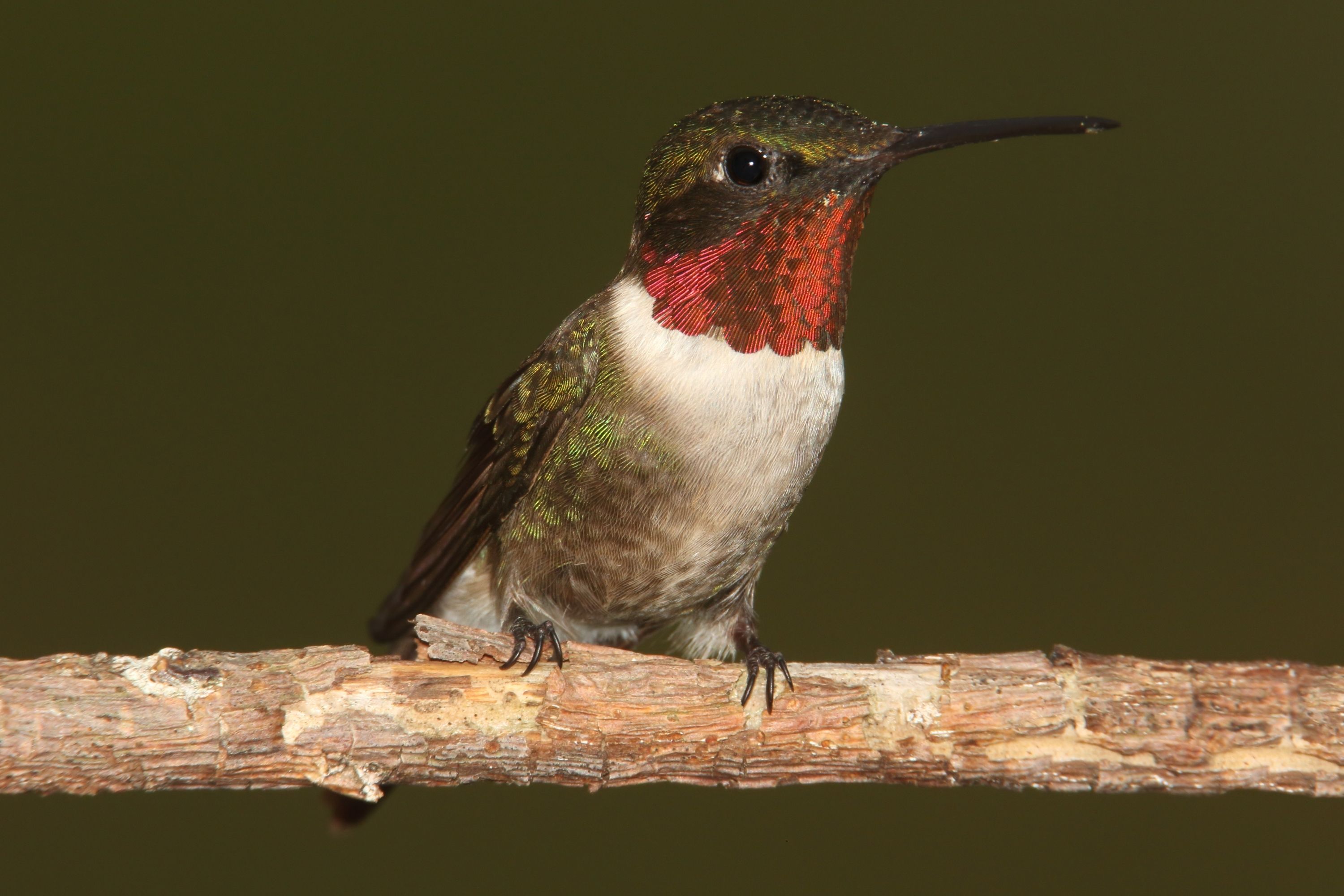Ruby-throated hummingbird
(Archilochus colubris)

Description
Archilochus colubris, commonly known as the Ruby-throated Hummingbird, is a small, brightly colored bird native to North America. This species is the only hummingbird that breeds east of the Mississippi River and is a favorite among birdwatchers due to its stunning appearance and unique behaviors. Physical Description Ruby-throated Hummingbirds are tiny birds, measuring only 3-3.5 inches in length and weighing just 0.1-0.2 ounces. Males have a bright iridescent green back, wings, and tail, while females have a duller green back and white underparts with green spots on their sides. Both sexes have a long, thin, black bill that is perfectly adapted for sipping nectar from flowers. The most striking feature of the male Ruby-throated Hummingbird is its vibrant ruby-red throat patch, called a gorget, which is iridescent and changes color depending on the angle of the light. This patch is absent in females, who instead have a white throat and a greenish-gray wash on their sides. Habitat and Range Ruby-throated Hummingbirds are found in a wide range of habitats, including forests, woodlands, meadows, gardens, and suburban areas. They breed in the eastern half of North America, from southern Canada to the Gulf of Mexico, and winter in Central America and Mexico. Behavior and Diet Ruby-throated Hummingbirds are known for their incredible aerial acrobatics, including hovering in mid-air and flying backward, forward, and even upside down. These behaviors are made possible by their unique wing structure, which allows them to generate lift in both the upstroke and downstroke of their wings. Their diet consists mainly of nectar from flowers, which they lap up using their long, thin tongue. They also eat small insects and spiders for protein, which they catch in mid-air or pluck off of leaves and branches. During migration, Ruby-throated Hummingbirds may also feed on tree sap and fruit. Breeding and Nesting Ruby-throated Hummingbirds typically breed from late April to early September. Males perform an elaborate courtship display to attract females, which involves flying in a U-shaped pattern and making high-pitched chirping sounds. Once a female chooses a mate, she builds a tiny cup-shaped nest out of plant fibers, spider silk, and other materials, which she attaches to a tree branch using spider webs. The female lays two tiny eggs, which she incubates for 12-14 days. After hatching, the chicks remain in the nest for another 18-22 days, during which time they are fed a diet of regurgitated nectar and insects by both parents. Conservation Status Ruby-throated Hummingbirds are currently listed as a species of "least concern" by the International Union for Conservation of Nature (IUCN). However, habitat loss and fragmentation due to development and agriculture, as well as pesticide use, are potential threats to their populations. To help support these beautiful birds, individuals can plant native flowering plants and trees, avoid the use of pesticides and herbicides, and provide a clean source of water for them to drink and bathe in. Conclusion In summary, the Ruby-throated Hummingbird is a fascinating and beautiful bird that is beloved by birdwatchers and nature enthusiasts alike. Its unique behaviors, stunning colors, and important role as a pollinator make it a valuable part of North America's biodiversity. By learning more about this species and taking steps to protect its habitat, we can help ensure that future generations will continue to enjoy the magic of the Ruby-throated Hummingbird.
Taxonomic tree:







